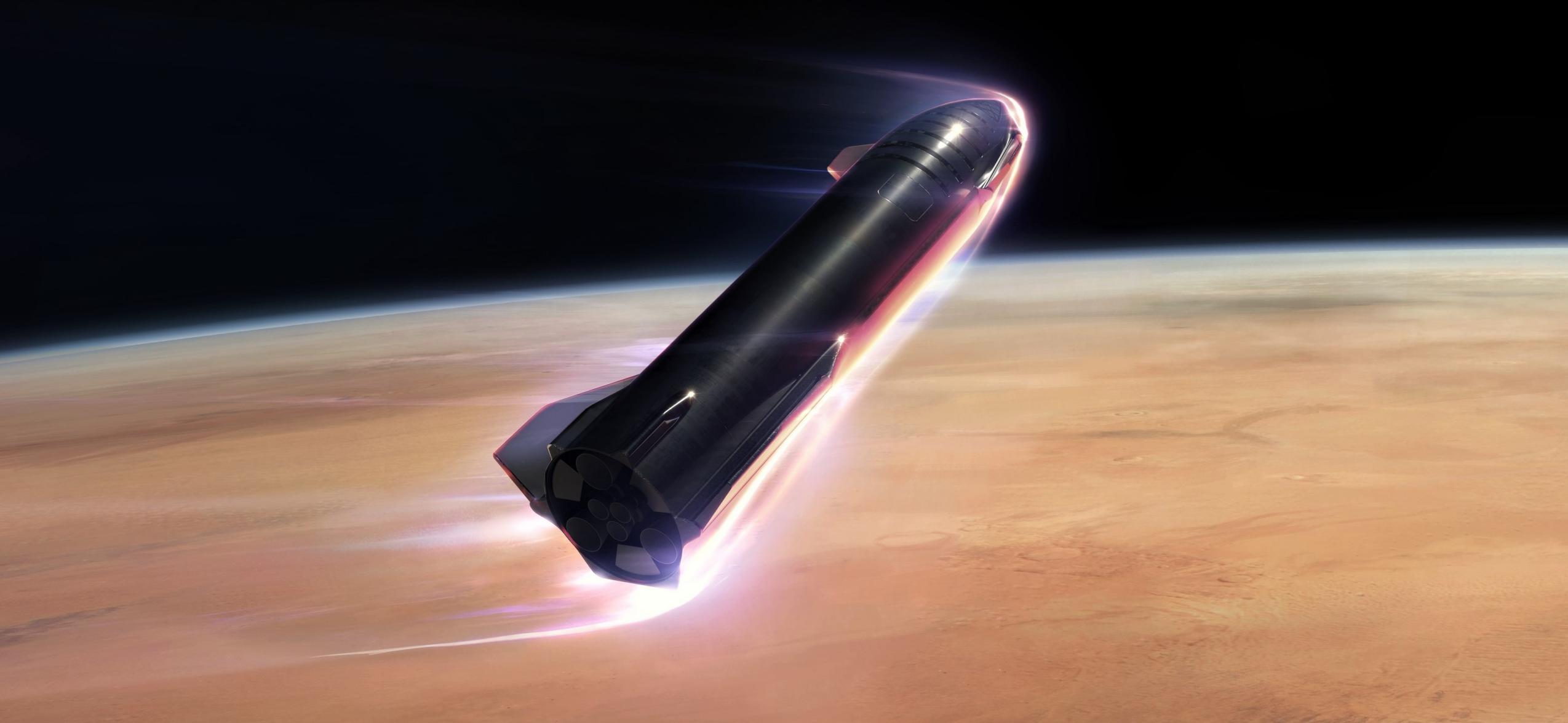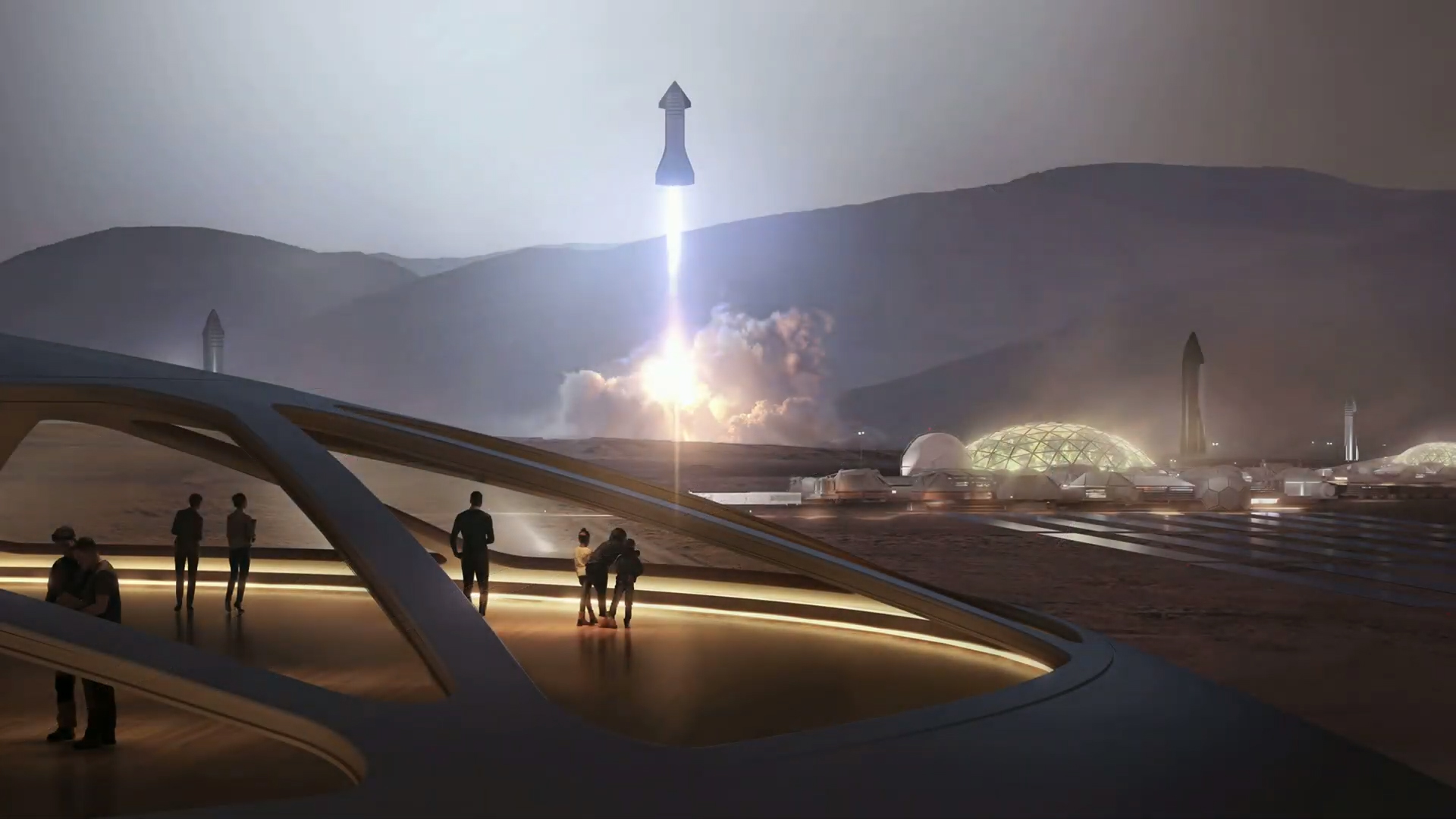
How Will SpaceX’s Starship Return To Earth From Mars?
With plans to go to the Moon, Mars, and beyond, it can bear the question of how will Starship return. With almost every bit of Starship’s propellant spent on the trip there, SpaceX will have to ensure either enough propellant is leftover or they are able to produce it on another planet. Additionally, Starship’s first stage Super Heavy won’t be there to help.
Starship will return to Earth from Mars by using natural H2O and CO2 resources found on the surface. Starship will then make the long journey back home. Once close, Starship will enter the Earth’s atmosphere using its large heat shield array and stainless steel construction to withstand the heat.
While Starship still has a long way to go prior to landing on Mars, SpaceX already has a plan for how they will get back. Thanks to Starship using a mix of liquid methane and oxygen as the propellant, it’s possible to produce this on the surface of distant planets including Mars.
The Process Of Getting To Mars

The journey to Mars is complicated and has a lot of different steps. A lot of these steps are focused on Starship’s propellant and how to get it all the way to the red planet. At first, the full Starship is launched off the ground from Earth. This is one of the hardest parts due to Earth’s atmosphere and gravity. Starship uses Super Heavy to get the majority of the way up prior to stage separation. Super Heavy is then disconnected from Starship and heads back towards Earth. Starship lights its engines to get into Earth’s orbit.
Once in orbit Starship will wait for a second starship to launch and meet up in orbit. The original Starship will then refill with liquid oxygen and methane from the secondary Starship. Finally, with enough propellant for the journey, Starship relights its vacuum engines and heads on a trajectory for Mars. Months later the Starship arrives a few hundred million miles away. With Starship’s little remaining propellant it will enter the atmosphere and perform a landing burn. The Starship will slowly touch down on the surface with very little liquid methane or oxygen left.
Producing Propellant On The Martian Surface
Producing liquid methane and oxygen on the surface of Mars has been SpaceX’s plan for quite a while. They want to use the resources available on the planet to create their own propellant for Starship’s trip back. In the future, SpaceX also plans on landing a lot of Starships on Mars which would require a lot of liquid methane and oxygen. Producing their own propellant could be a difficult but good long-term solution for the trip back to Earth.
Liquid Methane – One of the first steps to creating methane on the surface of Mars is getting access to electricity. Electricity is needed for a lot of other things including the process of creating propellant. Elon and SpaceX have planned to use solar for producing electricity on Mars. Once SpaceX has a power source they need to produce the propellant itself. For methane, SpaceX will use the CO2 and H2O reserves that are plentiful on Mars. The Martian atmosphere is made up of a majority of carbon dioxide at over 95%. As for H20, there are massive ice deposits that SpaceX could gain access to for water. Once SpaceX has both CO2 and H2O they can use the energy produced from solar to mix the two and produce methane. Specifically, SpaceX would use electrolysis to split water into hydrogen and oxygen. Then using the Sabatier process, they could use carbon dioxide and hydrogen to create methane and water.
Liquid Oxygen – There is a similar process for producing liquid oxygen as well on Mars. It will use the same CO2 and H20 resources already on the planet. SpaceX has mentioned that one of the first ships on the planet will have a propellant plant. This is meant to be expanded over time to keep up with more and more happening on the planet. SpaceX has also pointed out that there is an effectively unlimited supply of carbon dioxide and water on Mars. Specifically, there is around 5 million cubic km of ice and 25 trillion metric tons of CO2. For oxygen production, SpaceX would again use the electrolysis process to split water into oxygen and hydrogen. This would not only provide the needed oxygen but also the hydrogen for methane creation.
Heading Back To Earth

The trip back to Earth is not an easy task at all for SpaceX and Starship. Once fueled the rocket will no longer have access to a large booster to get it out of the atmosphere. Thankfully the martian atmosphere is a lot thinner than Earth’s. Additionally, Mars’s gravity is about 38% of that on Earth. Starship will also likely have very little cargo compared to the trip to Mars. All these factors mean Starship can takeoff from the surface without a first stage and get into orbit. Once in orbit Starship will light its engines once again for a trajectory towards Earth. The journey will take around half a year before finally arriving at the blue planet.
Entering Earth’s Atmosphere
Once Starship has arrived at Earth it still has arguably the hardest part of the entire trip. Starship will then enter the Earth’s atmosphere. When entering the atmosphere Starship will be exposed to thousands of degrees. Starship will enter at around a 60-degree angle. Using a large array of heat shield tiles covering over 50% of Starship along with its stainless steel construction, Starship will be capable of withstanding the high temperatures. The stainless steel construction is heavy but provides additional benefits including high heat resistance. This is not enough by itself however which is why SpaceX is currently testing using hexagonal heat shield tiles.
Landing
Through the re-entry process, Starship will have lost the majority of its speed aerodynamically. Starship will bellyflop towards the ground using its large size and fins to slow it down and orient itself correctly. Once close to the ground Starship will perform a landing burn with its final propellant reserve. Starship will either light its engines and land on the ground or try to be caught out of mid-air. SpaceX is planning on catching Super Heavy out of the air and Elon Musk has mentioned that it would be ideal if they could catch Starship as well.
Conclusion
SpaceX has a lot of work to do prior to getting to Mars. The Starship testing campaign has continued at very fast speeds and is making good progress. However with the first orbital test flight about to happen SpaceX still has a lot of testing to do. This test will be the first time Starship tries to get into orbit, enter the atmosphere, and more. All of these steps are crucial for a mission to Mars and especially back. The tests SpaceX is doing now will have a direct effect on future plans and possible changes for how Starship will safely return to Earth. For the time being SpaceX has a plan. Once landed on the Martian surface they will produce their own fuel. Using the planet’s plentiful CO2 and H2O reserves found in the atmosphere and ice deposits they will create liquid methane and oxygen. Starship will use this fuel to escape the thinner atmosphere and lower gravity of Mars. Finally, it will make the long trip back towards Earth. After arriving at our planet Starship will enter the atmosphere and use its remaining propellant for a landing burn. As testing goes on and plans change we will see exactly how SpaceX and Starship plan on returning from Mars.
